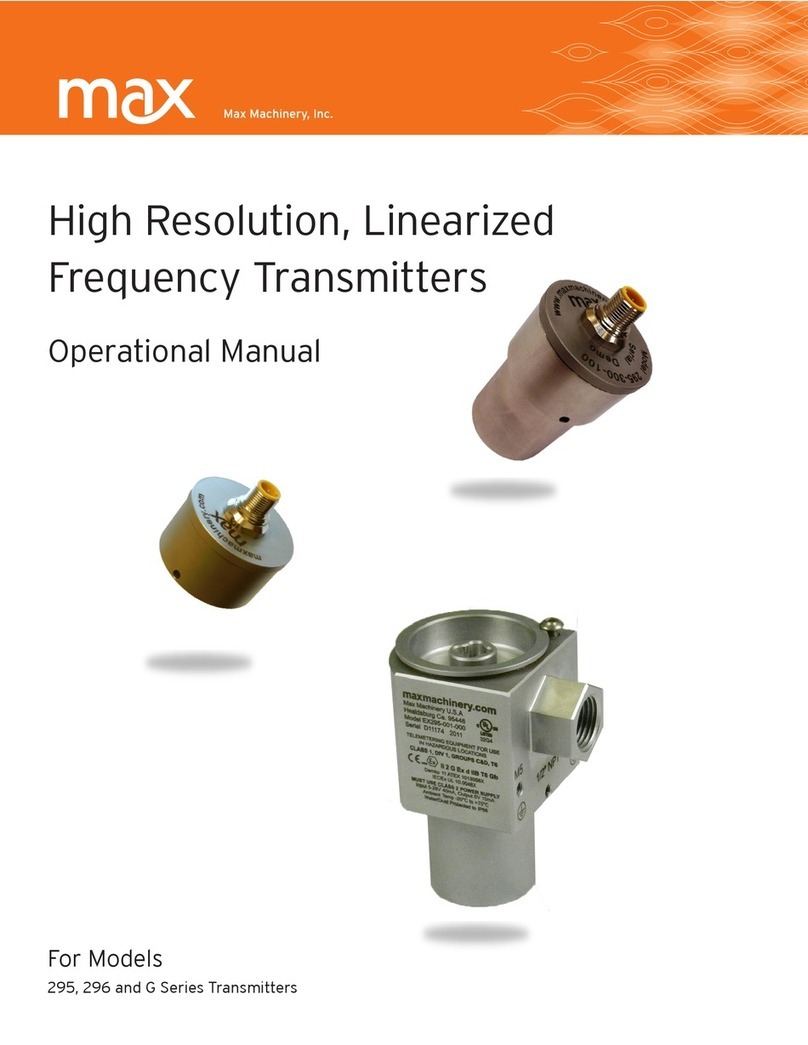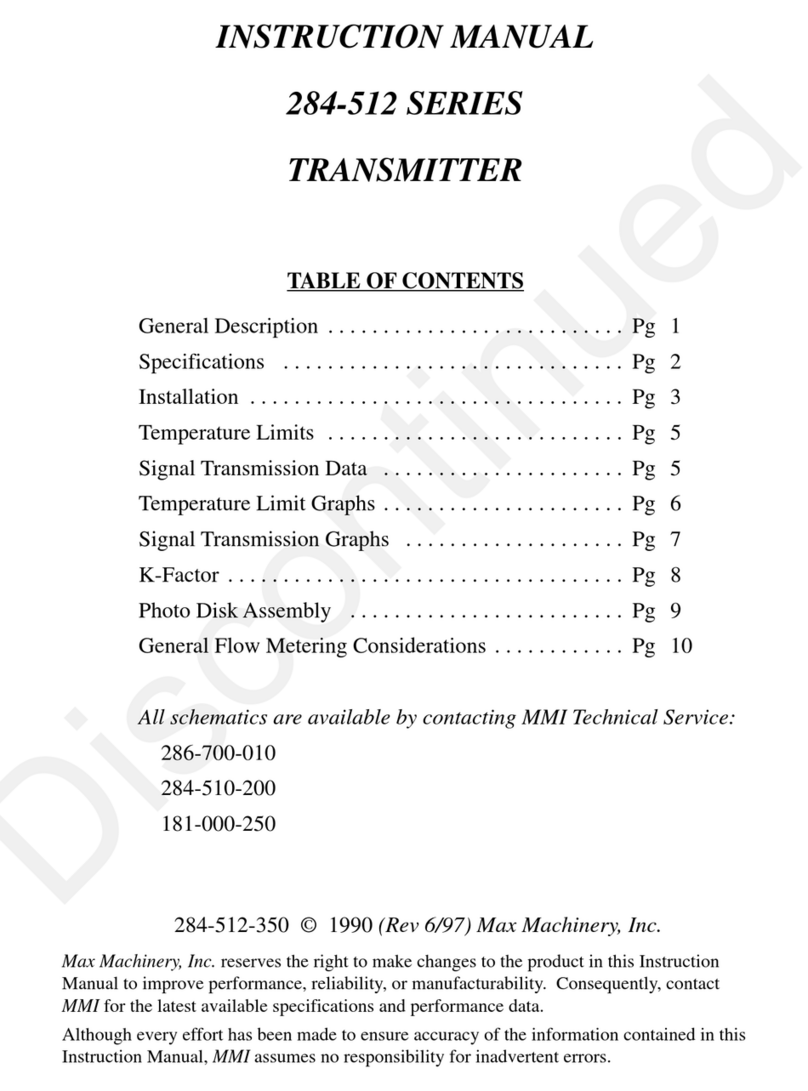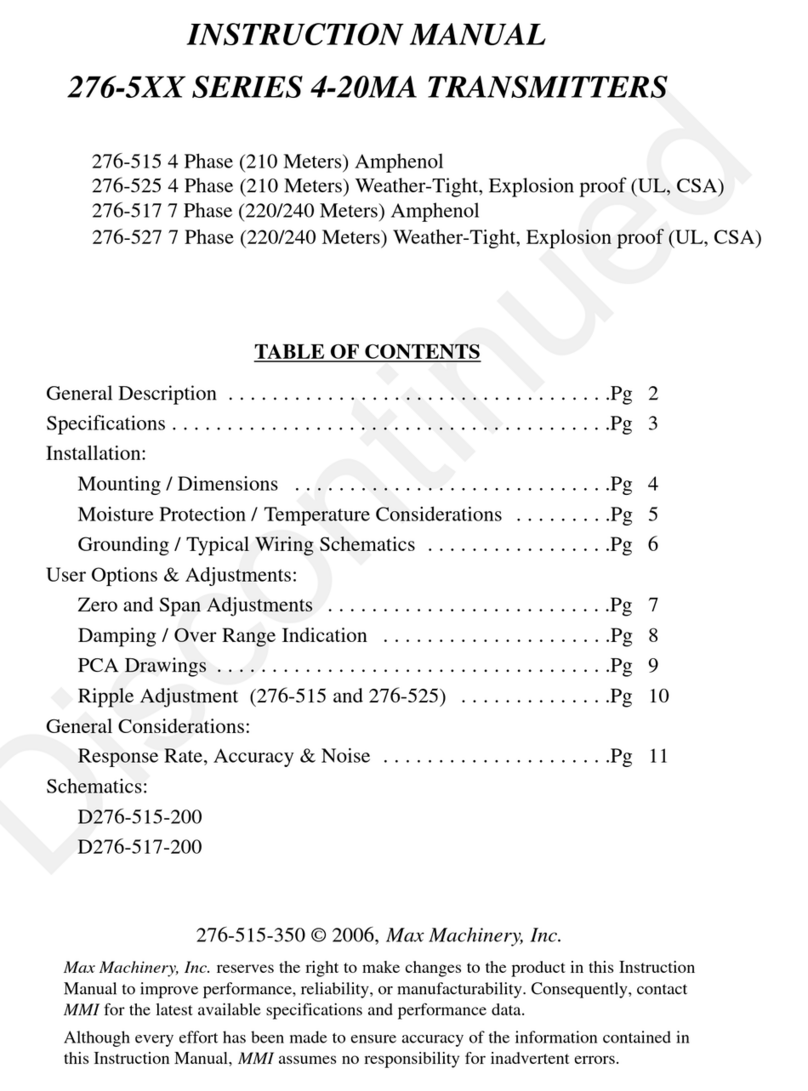
Output Indicators:
D10, D11: These bi
-
color (red, green) LEDs indicate the status of the outputs. If the 2
-
phase output
mode has been selected, the state of Phase A and Phase B are each shown on the corresponding
LEDs (‘O
UT/
A’ and ‘DIR/
B’). If the combined output mode has been selected, the LED labeled
‘OUT/
A’ shows the status of the pulse output channel, and the LED labeled ‘DIR/
B’ indicates
the direction.
Microprocessor Reset:
S2: In the event that the tachometer
does not appear to be operating correctly, resetting the
microprocessor by momentarily depressing S2 may solve the problem. While the reset button is
depressed, the ‘MEM FAIL’ LED will turn on, and if the memory is good, the LED should turn back
off when
the button is released.
RVDT Rotor Position Indication LED’s:
D3
-
D6: These LED’s provide a graphical representation of the position of the RVDT rotor. This
can be a helpful troubleshooting aid when trying to determine if a meter is turning or not. Th
e
rotational pattern observed on the LED’s corresponds directly to the rotational speed of the RVDT
rotor. At high speeds, the LED’s will just look like they are blinking; the human eye can no longer
discern the direction of motion. At very high speeds t
he blinking will not even be obvious and they
will all appear to be a constant brightness. At these higher speeds, a divide
-by-ten feature can be
activated by pressing S5 (the ‘CAL’ button, make sure S3 is not in the 0 position, otherwise the
calibration
routine will be run!). This only slows down the Rotor Position indication LEDs, the
output frequency does not change.
‘CAL’ LED:
D9: This LED changes color (red to green or green to red) 4 times per revolution while the
microprocessor is performing the
calibration routine on the stator coils. When calibration is
complete, it will turn off. See Calibration Section for more information on calibration procedures.
‘SLOW’ LED:
D8: If a calibration is initiated but the flow rate is too low to give acceptab
le results, the calibration
will be aborted, and this LED will light up red for 10 seconds. See Calibration Section for more
information on calibration procedures.
‘MEMORY FAIL’ LED:
D7: The microprocessor continually checks the integrity of its progra
m storage memory. If one or
more memory values do not read what they are supposed to, this LED will turn on. Two possible
causes of memory failure are prolonged operation/storage at temperatures exceeding the ratings and
transient voltages applied to inp
uts and/or outputs that exceed ratings. If the transmitter does not
appear to be functioning correctly and this LED is on, the unit should be sent back to the factory for
service.
Outputs, Options & Indicators
286-300-
350 © 2002,
Max Machinery, Inc.
(8)






























